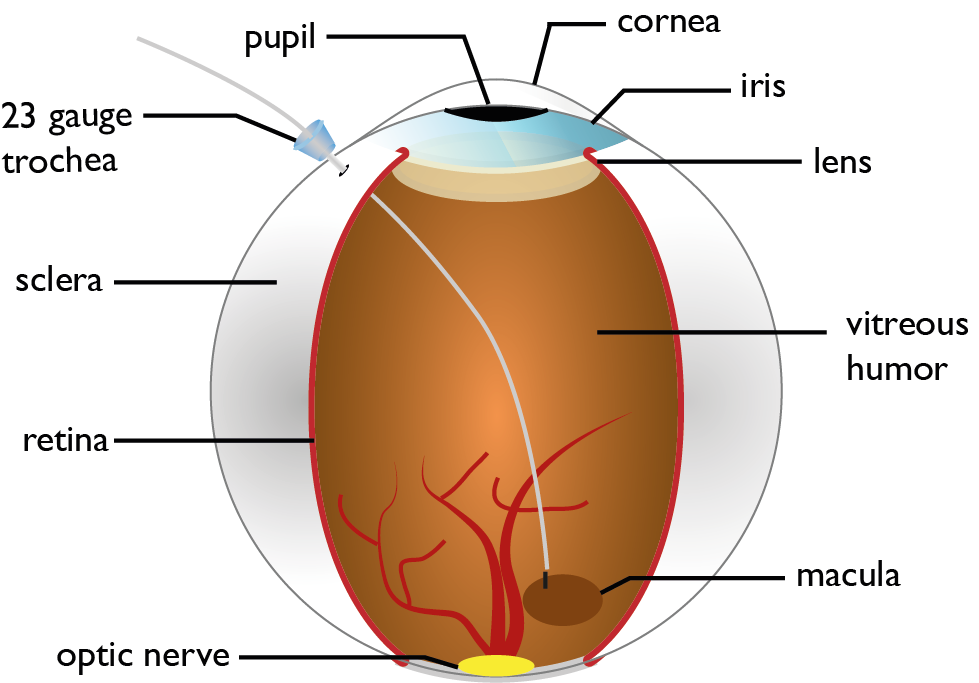Eye surgery
Age-related macular degeneration and diabetic retinopathy are diseases which affect the retina, the light-sensitive membrane that lines the back of the eye that is responsible for vision. These diseases are the leading causes of blindness, and their prevalence is set to increase with an aging population in western countries. In some cases, age-related retinal diseases and the complications associated with them such as retinal tears, epiretinal membranes, or subretinal hemorrhages, require vitreoretinal surgery. Vitreoretinal surgery is performed using sub-millimeter instruments that are inserted through incisions in the pars-plana, a ring situated in the vicinity of the iris, and visualized through the pupil using a surgical microscope. It requires great coordination and precision from the surgeon, and some structures of the retina are comparable in size to the amplitude of the average human tremor.
At the MSRL, we are researching magnetically steered micro-tools that could be used in future vitreoretinal surgeries. Such tools are flexible, and are bent wirelessly inside the chamber of the eye using torques applied on magnets located at the tip, and by electromagnets located around the head. They are potentially more precise, more dexterous, and safer than conventional rigid handheld tools. We are also investigating automation and assistance during vitreoretinal tasks, by tracking the tools in images and performing feedback control.
Contacts: Samuel Charreyron, Jonas Lussi, Quentin Boehler

